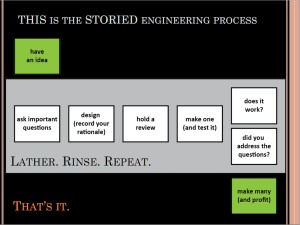One of the first questions people ask when I talk about open source spaceflight is “What about ITAR?” It’s no wonder. Nearly everything to do with spaceflight technology is export controlled, making it illegal for US citizens and permanent residents to openly share spaceflight hardware and its supporting documentation. Needless to say, ITAR is a significant challenge for Mach 30 and other open source spaceflight groups.
I’ve spent a lot of time thinking about how Mach 30 might approach these challenges. The short answer is obvious. We work within the boundaries of ITAR. That doesn’t mean, however, we are abandoning are open source values.
The long answer is we need to develop a combination of approaches to openly publish as many of our projects as we can, while ensuring we are fully compliant with the requirements of ITAR. To that end, I’ve come up with four potential paths that might allow Mach 30 to develop spaceflight hardware in a (mostly) open way, while still staying in full compliance with the restrictions placed upon US based persons under ITAR.
Develop quasi-open source spaceflight projects
The first approach to dealing with ITAR, and in the early days the most noticeable approach, is running quasi-open source spaceflight projects. Mach 30 could host all of its spaceflight projects on a private copy of Open Design Engine, access to which will be limited to individuals who we have verified are US persons and who have received appropriate ITAR training in order to comply with ITAR. If you look at the formal definition of open source hardware, one of the requirements to be open source hardware is providing unrestricted access to the design documentation. Our space projects will fail to meet this requirement due to our insisting people agree to follow ITAR in order to gain access to our designs, hence calling them quasi-open source.
Create a catalog of published spaceflight technology
The second approach is crowd sourcing a catalog of the large body of published spaceflight technology. Why is this important? Simply put, any technology which is already published in public literature is exempt from ITAR. Let me repeat, if you can find a public article, book, or other source which fully documents a piece of spaceflight technology, then that technology cannot be withheld by ITAR. And, it turns out there is a large body of scholarly articles, textbooks, and government reports, especially from NASA, covering spaceflight technologies. Mach 30 could launch a new wiki to catalog, tag, and for openly licensed materials, archive publicly available materials concerning spaceflight technologies. This new wiki will be a public resource to help identify which projects need to be quasi-open source, and which can be fully open source.
Develop core technologies in non-space disciplines
The third approach is developing technologies as part of fully open source projects in non-space disciplines. Many core systems which are important for spaceflight are also applicable to non-space applications. Examples include power management, sensing, and command and control. By developing these systems in non-space applications, we could avoid the ITAR triggers and still develop the systems in full compliance with the definition of open source hardware. Projects could include solar powered robots to develop power management systems, autonomous Remotely Operated Vehicles (ROVs – remote controlled submarines for underwater exploration) to develop sensors and their related systems, and high altitude balloons to develop command and control systems. Once the technologies have been developed in these fully open projects, they can be ported into the quasi-open projects for use in space applications, but the core development will still be available in the non-space projects.
Partner with non-US groups for technology transfers
The fourth and final approach is to establish partnerships with non-US groups and to develop approved technology transfers. One such group Mach 30 is already discussing this approach with is CSTART. CSTART is an open source space organization which started during an online discussion at reddit.com. Its membership includes people from all over the world. At a recent joint meeting on ITAR, CSTART and Mach 30 discussed CSTART becoming a non-US group and its US members joining Mach 30. Both groups could then work within ITAR and other export control regimes, while they investigated the processes required to transfer technology into or out of the US. We imagine it will be easier to transfer technology into the US, but we will work diligently to find opportunities to legally transfer technology both ways.
So,where once there was the big scary ITAR, we now have a potential path forward for open source spaceflight. Please share your ideas for additional paths, as well as potential pitfalls of these suggested paths, in the comments!
ad astra per civitatem







